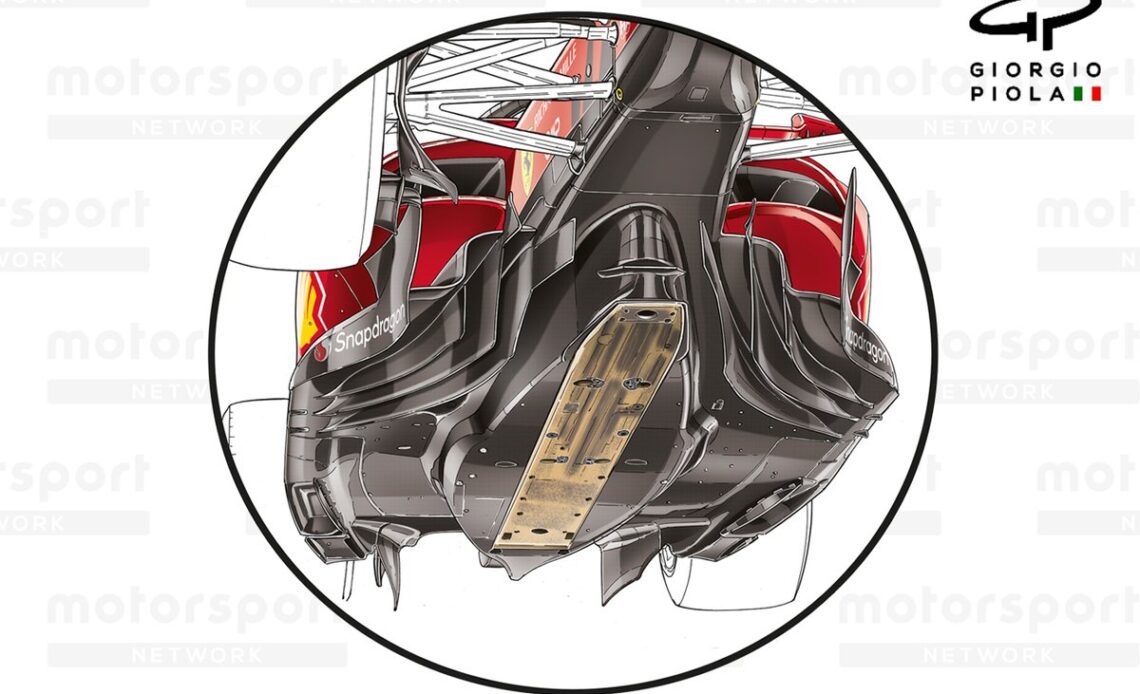The frequency of changes is always heightened around the introduction of a major regulation shift, such as the one we’ve just had for 2022, which often results in amendments throughout the course of the year and for the following season.
The main changes for 2023 have centered on the floor of the cars, owing to the divisive nature of the teams when it comes to some cars porpoising and bouncing. Many of them feel they’re being changed for the wrong reasons.
PLUS: The complexities contributing to F1’s current bouncing storm
There has been a back-and-forth dialogue between the governing body and the 10 F1 constructors to find some common ground ahead of the adjustments, leading to the FIA softening its approach when compared with its initial recommendations.
It originally insisted on the outer portion of the floor being raised by 25mm, and more stringent load tests being applied in order that the floor doesn’t overtly flex. This would reduce the teams’ ability to run the edge of the floor closer to the track’s surface and inherit greater aerodynamic performance.
As a compromise, the regulations have been altered to reflect a 15mm height increase at the outer edge of the floor for 2023, with no more than 5mm vertical deflection when a 250N load is applied in a downwards direction and no more than 5mm vertically when a 250N load is applied upwards.
For 2022 this has been 8mm and 12mm respectively and therefore requires the teams to build-in more stiffness to pass the requisite tests.
Changes to the geometry of the floor’s edge have also ensued to tidy up any loose ends that the governing body feel slipped through the net during 2022.
In a related move, the FIA has also reduced the number of holes required to measure conformity from six to four, with the two in the central section of the plank considered redundant.
Ferrari F1-75 floor
Photo by: Giorgio Piola
What are the F1 2023 front wing changes?
The FIA has both given and taken away in terms of the front wing too, as measures have been taken to further restrict the design of the flap and endplate juncture.
This all but rules out the complex design introduced by Mercedes at the Canadian Grand Prix (below), which is expected to offer more ‘outwash’ than was originally intended when the new regulations were framed.
The teams will be given a little more freedom in terms of adjustability though, as currently the flaps are only able to have 35mm of adjustability, with the FIA…
Click Here to Read the Full Original Article at Autosport.com – Formula 1 – Stories…

